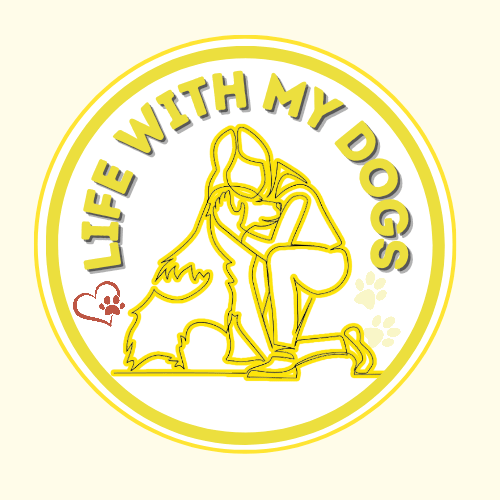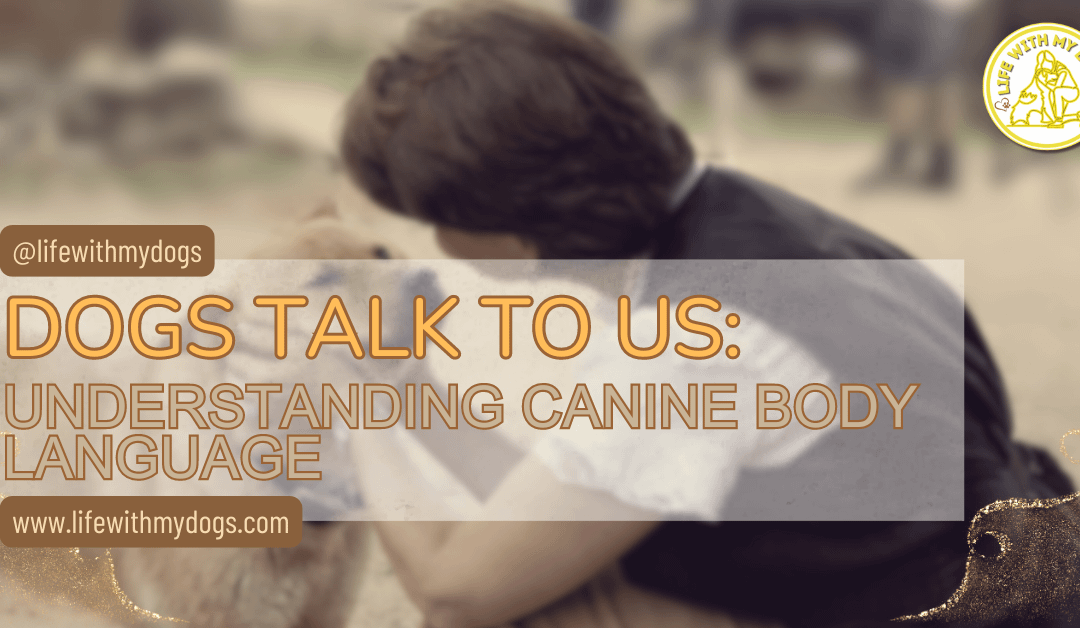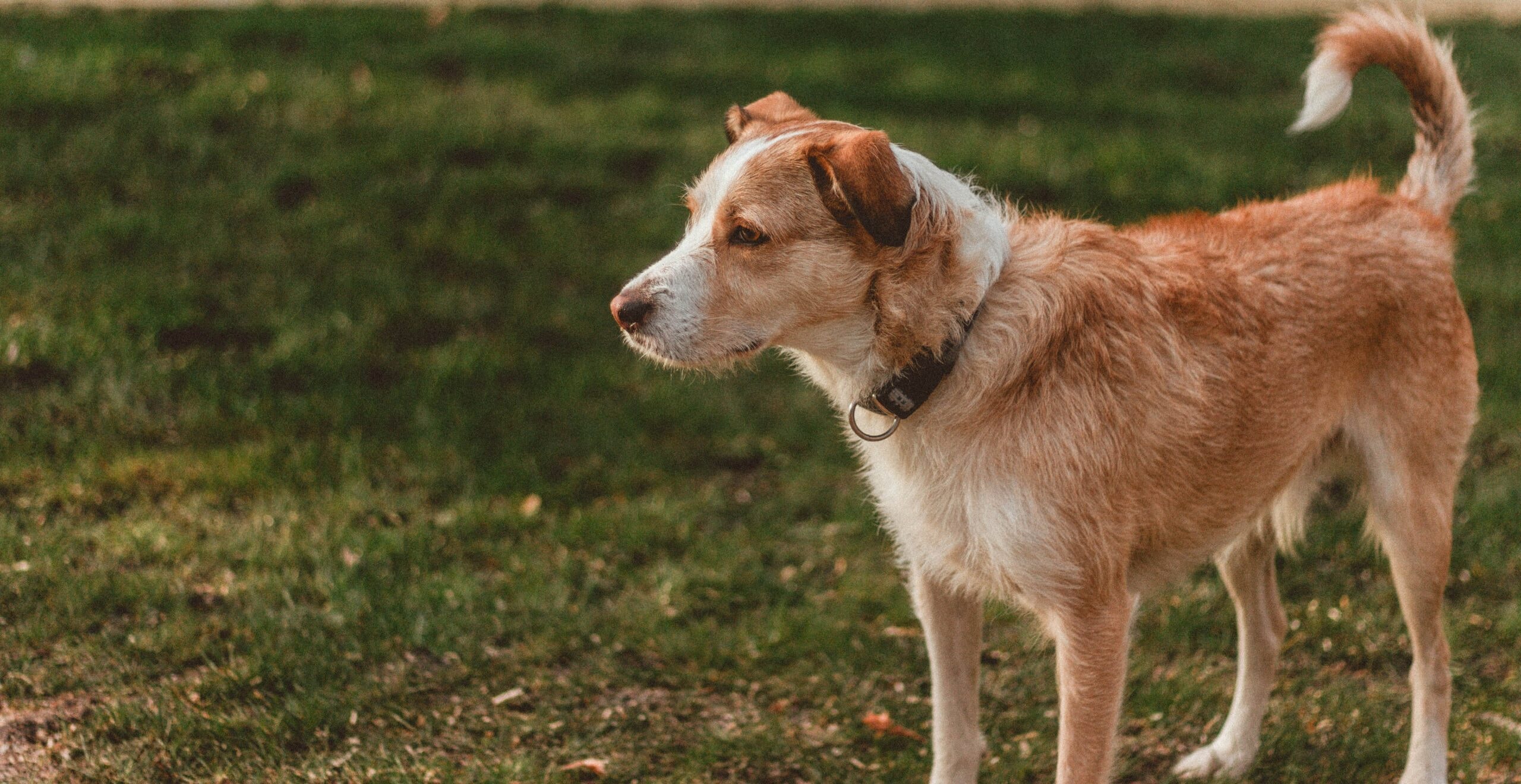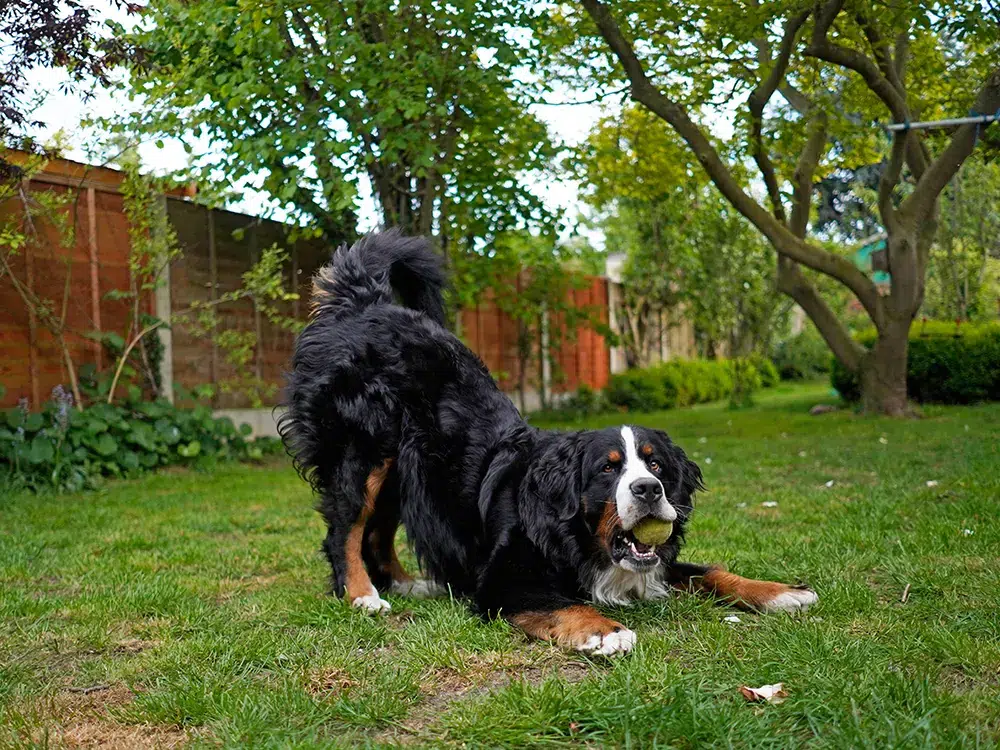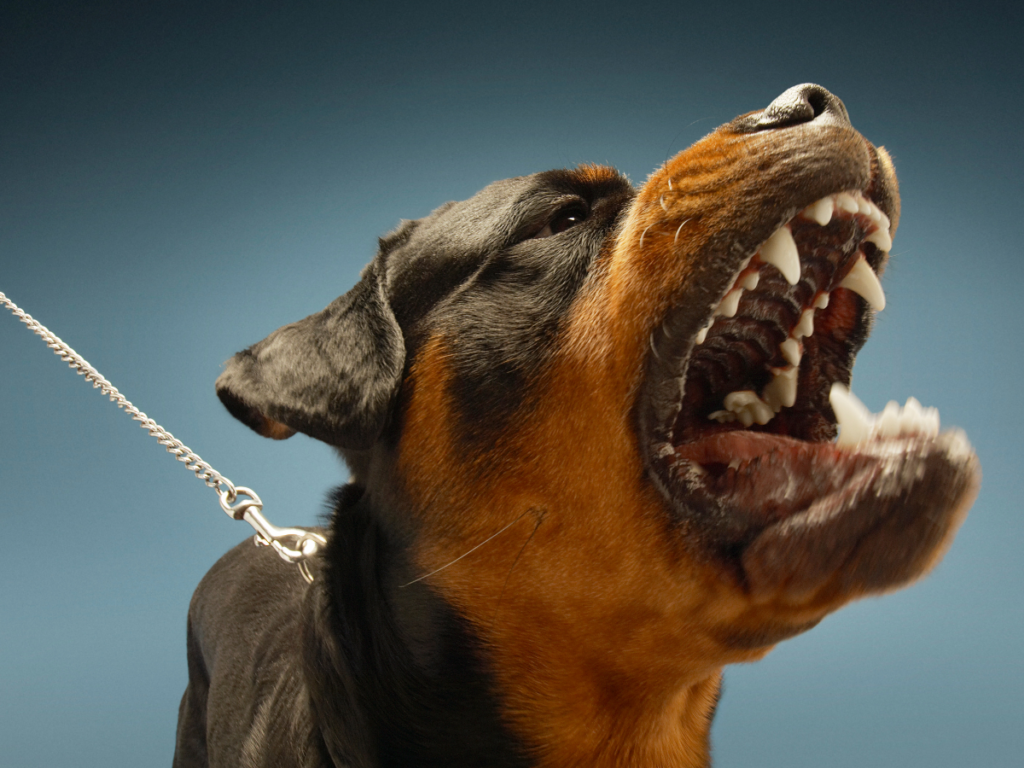LifeWithMyDogs is supported by our audience. When you purchase through one of our links, we may earn a small affiliate commission. As an Amazon Associate I earn from qualifying purchases. Your cost is not affected.
**********
Dogs have a unique way of communicating with us, even though they can’t speak our language. By understanding canine body language, we can interpret their emotions, desires, and concerns that often go unnoticed. Each gesture offers insight into what they’re feeling or thinking, from the wag of a tail to the tilt of an ear. Recognizing these signals helps create a deeper bond and better understanding between you and your furry companion.
In this article, we’ll dive into the fascinating world of canine body language, unlocking the secrets behind their behaviors. By becoming more in tune with these cues, you’ll be able to respond more effectively to your dog’s needs and strengthen the trust you share. Understanding how dogs talk to us can transform your connection with your loyal friend.
Guide to Understanding Canine Body Language
As a dog trainer, understanding a dog’s body language made training much easier. It’s necessary for a well-trained dog and companion. Understanding what your dog is saying without words is like unlocking a hidden superpower. Dogs, our loyal companions, provide us with many non-verbal cues that tell us if they’re happy, anxious, stressed, or excited. But to tap into that secret language, we must know what to look for. Why bother, you ask? Well, imagine trying to teach someone who doesn’t speak the same language as you.
Teaching, or training, requires understanding. You and your dog need to be able to communicate with each other. It’s two-way. And being able to read your dog’s body language strengthens your bond. Dogs communicate primarily through body language. Yes, barking is a thing, but what they’re trying to tell us is all in their body signs. Every tiny movement can be a message from the tip of their ears to the wag of their tail.
Have you ever wondered why your dog sometimes seems to ‘talk’ to other dogs just by looking at them? That’s because they’re pros at body language. They instinctively know how to read another dog’s mood and intentions. As humans, we must train ourselves to pick up on these cues. Recognizing these signals can make a massive difference in how you and your dog interact. Picture this: Your dog is stressed, but you misread it as excitement and try to play with them. This can make them more anxious. Conversely, catching that early could mean giving them the comfort they need. It’s all in the details, and those details matter.
Key Highlights
- Understanding canine body language is crucial for interpreting your dog’s emotions, needs, and intentions. Observing subtle cues like tail wags, ear positions, and facial expressions helps reveal what your dog is feeling or thinking, fostering a deeper connection between you and your pet.
- Dogs communicate their state of mind through their posture. A relaxed dog typically has a loose stance, while an alert dog stands tall with pricked ears. Recognizing dominant, submissive, or fearful postures allows you to respond appropriately and manage interactions, especially in multi-dog households.
- Facial expressions and ear positions provide valuable clues about your dog’s mood. For example, upright ears signal curiosity, while ears flat against the head indicate fear or submission. Soft eyes and a relaxed mouth usually signify contentment, whereas wide eyes and bared teeth can signal stress or aggression.
- The tail is a key communicator of a dog’s emotions. A high, stiff tail indicates alertness or dominance, while a low or tucked tail typically reflects fear or submission. Tail wags vary in meaning based on speed and direction, offering insights into your dog’s emotional state.
- Dogs use various vocalizations—barking, whining, growling, and howling—to convey different messages. Understanding the context and tone of these sounds, combined with body language, helps you better address your dog’s needs, whether they are expressing excitement, anxiety, or discomfort.
Decoding the Canine Posture
Dogs speak with their whole bodies, and understanding canine body language gives us a peek into their feelings at any moment. A relaxed dog will have a loose, easy stance. Their body isn’t stiff, and they’ll often have their ears up, mouth slightly open, and tail down but not tucked.
Alert Posture
An alert posture looks different. The dog stands tall, ears pricked forward, and the tail is usually up and possibly wagging slowly. This doesn’t mean aggression—just that something has caught their interest. Offering a treat or encouraging them with a calm voice can help them settle back into a relaxed state.
Dominant Posture
Recognizing a dominant posture is key, especially in multiple dog households. These dogs hold themselves high and stiff, with their tail often up and bristling, ears forward. They might also try to position themselves above other dogs. This is generally manageable by ensuring all dogs feel secure and not pitted against one another for resources or attention.
Crouched Stances
On the flip side, submissive dogs have lower, more crouched stances. They might roll onto their back, exposing their belly, a sign of trust and submission. Rather than overwhelming them with affection, gentle reassurance is the best approach.
Aggressive or Fearful Postures
Aggressive or fearful postures need careful handling. An aggressive dog might have a rigid body, bared teeth, and a direct stare, while a fearful dog often looks crouched, with ears back, tail tucked, and averted eyes. Avoid confrontation. Slowly back away and allow them space to calm down. Training and professional advice might be necessary to address these behaviors.
Did you Know?
When a dog rolls onto its back and exposes its belly, it is generally a sign of trust and submission. This behavior shows that the dog feels safe and is not in a defensive posture. However, some dogs might roll over as a way to initiate play.
Facial Expressions and Their Meanings
Dogs don’t need words to tell us how they feel—those big eyes, perked ears, and even that goofy tongue do most of the talking. Understanding Canine Body Language can unlock a whole new level of communication between you and your furry friend, strengthening your connection.
Ears
Let’s start with the ears. Upright, forward-pointed ears often signal curiosity or alertness. Are ears flat against the head? That usually means fear or submission. If your dog’s ears are relaxed and neither pointing forward nor clinging to their head, consider it a sign they’re in a happy, laid-back mood.
Eyes
Next up, the eyes. Soft eyes with a gentle gaze signal contentment and friendliness. On the contrary, wide eyes with visible whites (sometimes called “whale eyes”) often indicate stress or discomfort. A direct stare can signify dominance or even a prelude to aggression, while squinting or having half-closed eyes often means your dog is relaxed and maybe even a bit playful.
Mouth
Pay attention to the mouth, too. A relaxed, open mouth with a slight upturn can resemble a smile and usually means your dog is happy and comfortable. If you see curled lips or bared teeth, it’s a warning sign—time to step back and assess the situation. Drooling when there’s no food around might indicate anxiety or nausea, while excessive licking of their lips could be a sign of stress.
Head
The way your dog uses their head also tells a story. Cocked to one side often signals curiosity—like they’re puzzling out what you just said. A lowered head can mean submission or fear, especially if paired with lowered ears and tail. Raised eyebrows and a tilted head often show they’re super-tuned in and listening intently.
Tail Movements: The Silent Communicator
The tail is like a dog’s personal semaphore, sending out signals that can indicate many emotions. Understanding Canine Body Language and tail movements gives you valuable insight into what your dog might be experiencing at any moment.
High and Stiff Tail
A high, stiff tail often signals alertness or dominance. Your dog might hold its tail like this when encountering a new dog or hearing an unfamiliar noise. If the tail is high and wagging in short, controlled movements, it typically indicates a heightened state of interest or arousal.
Low and Tucked Tail
A low or tucked tail is a classic sign of fear, stress, or submission. It’s like your dog’s saying they’re not confident or trying to avoid confrontation. Providing a calm, safe space to help them regain confidence is crucial.
Tail Wag
The infamous tail wag isn’t a universal sign of happiness. The speed and direction of the wag can tell you a lot more. A slow wag with the tail held mid-level usually indicates your dog is feeling cautious. A comprehensive, sweeping wag often signals they’re happy and relaxed.
Remember to pay attention to the tail’s position and movement together. A rapidly wagging tail held high that’s still somewhat stiff can indicate excitement but also mean your dog is dominant or agitated. A low, slow wag usually signifies insecurity or a tentative mood.
Each dog is unique, and their tail language can vary. Spending time observing your dog’s quirks and movements will help you become a pro at understanding what they’re communicating.
Vocalizations and Their Contexts
Dogs may not have words, but they have a lot to say. Understanding canine body language and their different sounds can help you figure out what’s going on in their heads and hearts.
Barking
Barking is the most common vocalization. It can mean various things based on context and tone. Rapid, continuous barking often signals excitement or a call for attention. If the barking is lower-pitched and growly, that’s generally a warning or a signal that your dog feels threatened. Paying attention to the situation when the barking starts can explain what they’re trying to communicate.
Whining
Whining is typically a sign of anxiety, submission, or a plea for help. Dogs might whine when they want something, like attention or to go outside, but they can also whine when they’re in pain or anxious. When your dog whines, it’s essential to consider the surrounding circumstances. Check if they need something or if there are changes in their environment causing stress.
Growling
Growling is another sound with multiple layers. A soft growl can sometimes be heard during play, indicating your dog is getting into the game. However, a deep, rumbling growl usually means they feel threatened or aggressive. Never ignore growling; it’s your dog’s way of giving a warning. Assess the situation to see what might be making them uneasy or defensive.
Howling
Howling is less common but still significant. Dogs might howl to express loneliness or sometimes just for fun, especially if they hear high-pitched sounds like sirens or certain music. If your dog starts howling more than usual, it could be a sign they’re feeling isolated or craving more interaction.
Each vocalization has its own clues that, combined with body language, can give you a complete picture of what’s going on with your four-legged friend. Observing and listening carefully will help you respond in ways that make your dog feel understood and loved.
Here’s an additional video about dog body language.
By: Jaw-Dropping Facts
Unlocking a Deeper Connection Through Canine Body Language
Understanding canine body language is key to building a stronger bond with your dog and ensuring their overall well-being. Dogs communicate information through their movements, expressions, and postures. By recognizing these subtle signals, you gain insight into their emotions and needs, whether they’re feeling happy, stressed, or in need of comfort. This awareness enables you to respond more effectively, creating a harmonious and responsive relationship.
Decoding these non-verbal cues deepens your connection with your furry friend and helps prevent misunderstandings that could lead to behavioral issues. When you can interpret your dog’s tail wags, ear positions, and facial expressions, you can address their needs more accurately and foster a more positive and supportive environment. This proactive approach ensures that your dog feels understood and valued, reducing stress and enhancing their quality of life.
As you become more adept at reading your dog’s body language, you’ll unlock a richer and more nuanced way of interacting with them. This deeper understanding allows for more effective communication and strengthens the trust between you and your pet. Embracing the language of canine body signals improves your relationship and ensures that your dog’s emotional and physical needs are met with greater sensitivity and care.
FAQs
What Are the Key Signs of a Relaxed Dog?
A relaxed dog typically has a loose, easy stance with a relaxed tail, slightly open mouth, and ears in a neutral position. Their body should not be stiff, and they may appear calm and content with a gentle gaze and soft eyes.
How Can I Differentiate Between a Fearful and an Aggressive Dog Based on Body Language?
Fearful dogs often display a crouched posture, with their tail tucked, ears back, and eyes averted. They may also attempt to make themselves smaller. Aggressive dogs, on the other hand, may have a rigid body, bared teeth, a direct stare, and a high, stiff tail. Recognizing these signs can help manage and address their behavior appropriately.
What Does It Mean When a Dog's Tail is Wagging Slowly?
A slow-wagging tail can indicate caution or uncertainty. It might suggest the dog is unsure about a situation or slightly anxious. The context of the wagging, along with other body language signals, should be considered to understand their exact emotion.
How Can I Use Canine Body Language to Improve My Dog's Training?
Understanding your dog’s body language can significantly enhance training by allowing you to recognize when they are stressed, excited, or confused. This awareness helps adjust your training methods to be more effective and responsive to your dog’s emotional state, fostering a positive learning environment.
What Common Body Language Cues Indicate a Dog Wants to Play?
Dogs often use a play bow—lowering their front end while keeping their rear end up—to signal that they want to play. They may also exhibit a relaxed posture, wag their tail energetically, and have a playful demeanor. Engaging with these cues can lead to enjoyable and interactive play sessions.
Embark on an Exciting Journey with Your Furry Companions!
Ready for a tail-wagging adventure? Our guide is packed with tips for traveling with multiple dogs, and the excitement doesn’t end there.
Join our vibrant community of dog enthusiasts to:
Discover Engaging Content: Explore travel tips, product reviews, and training advice tailored for your pack.
Connect with Other Dog Owners: Share experiences, exchange travel tips, and make new friends for your pets!
Enjoy Endless Entertainment: Delight in amusing dog antics and heartwarming stories.
Follow us on Facebook, Instagram, Pinterest, X and YouTube.
Let’s make your next adventure with your beloved pets truly unforgettable!
